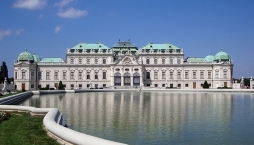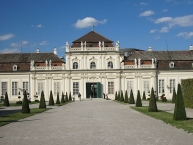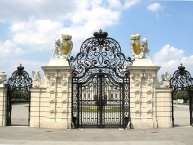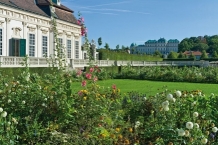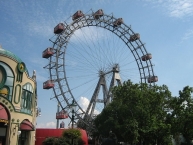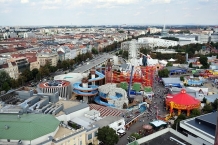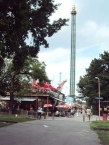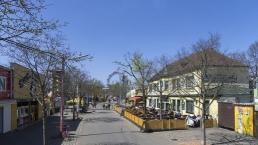Radtour Wien - Dieppe
Geplante Tour
Aktionen
![]()
Bitte warten - Kartendaten werden geladen
Erstellt am 09.06.2014,
zuletzt geändert von pinduwandu am 08.07.2018
Aktionen
Strecken-Merkmale
geplant
gefahren
Gesamtlänge in km
1.699
0
Gesamthöhenmeter Aufstieg
13.542
0
Durchschn. Steigung Aufstieg %
0,80
-
Gesamthöhenmeter Abstieg
13.698
0
Informationen zu Rechten an den GPS-Track-Daten | |
|---|---|
Rechte-Inhaber | |
Rechte-Ausprägung / Lizenz | cc0: Public Domain keine Rechte vorbehalten |
Link zur Rechtebeschreibung | |
gpx-Datei hochgeladen | durch tikey am 10.06.2014
|
Gesamtzahl Trackpoints
10.226
0
Trackpoint-Dichte per km
6
0
Endorte
Start
Gemeinde Wien, Wien, AT (161 m NHN)
Ziel
Dieppe, Haute-Normandie, FR (5 m NHN)
Fahrradfreundliche Unterkünfte, Sehenswertes und Infrastruktur
Name u. Anschrift
Breite / Länge
Tel.
Fax.
Mobile
Art d. Unterkunft
Radler-freund-lichkeit
Strecken-km
km zur Strecke
Höhe
0 km
4,6 km
192 m
Informationen zu Urheber-Rechten | |
|---|---|
Rechte-Inhaber | https://commons.wikimedia.org/w/index.php?title=User:Palacrogalin |
Rechte-Ausprägung / Lizenz | by-sa: CREATIVE COMMONS Namensnennung, Weitergabe unter gleichen Bedingungen |
Link zur Rechtebeschreibung | |
Bild übernommen aus | https://commons.wikimedia.org/wiki/File:Belveder_-_widok_od_frontu_-_Vienna.jpg |
Bild hochgeladen | durch biroto-Redaktion am 18.01.2015
|
Informationen zu Urheber-Rechten | |
|---|---|
Rechte-Inhaber | |
Rechte-Ausprägung / Lizenz | by: CREATIVE COMMONS Namensnennung |
Link zur Rechtebeschreibung | |
Bild übernommen aus | https://commons.wikimedia.org/wiki/File:AT-68612_Unteres_Belvedere_Wien_01.JPG |
Bild hochgeladen | durch biroto-Redaktion am 18.01.2015
|
Informationen zu Urheber-Rechten | |
|---|---|
Rechte-Inhaber | |
Rechte-Ausprägung / Lizenz | by-sa: CREATIVE COMMONS Namensnennung, Weitergabe unter gleichen Bedingungen |
Link zur Rechtebeschreibung | |
Bild übernommen aus | https://commons.wikimedia.org/wiki/File:Belvedere_Vienna_June_2006_006.jpg |
Bild hochgeladen | durch biroto-Redaktion am 18.01.2015
|
Informationen zu Urheber-Rechten | |
|---|---|
Rechte-Inhaber | Belvedere, Wien |
Rechte-Ausprägung / Lizenz | by-sa: CREATIVE COMMONS Namensnennung, Weitergabe unter gleichen Bedingungen |
Link zur Rechtebeschreibung | |
Bild übernommen aus | https://commons.wikimedia.org/wiki/File:Kammergarten_des_Schloss_Belvederes.jpg |
Bild hochgeladen | durch biroto-Redaktion am 18.01.2015
|
Das Schloss Belvedere (traditionelle Aussprache ohne Schluss-e) (von italienisch: schöne Aussicht) in Wien ist eine von Johann Lucas von Hildebrandt (1668–1745) für Prinz Eugen von Savoyen (1663–1736) erbaute Schlossanlage im Bezirk Landstraße
. Das Obere Belvedere und das Untere Belvedere (benannt auf Grund ihrer Lage auf einem südlich der damaligen Stadt ansteigenden Hang) bilden mit der verbindenden Gartenanlage ein barockes Ensemble. Die beiden Schlossbauten beherbergen heute die Sammlungen des Belvedere (Österreichische Galerie Belvedere
) und Räumlichkeiten für Wechselausstellungen. Am 15. Mai 1955 wurde im Oberen Belvedere der Österreichische Staatsvertrag unterzeichnet.
Informationen zu Urheber-Rechten | |
|---|---|
Rechte-Ausprägung / Lizenz | by-sa: CREATIVE COMMONS Namensnennung, Weitergabe unter gleichen Bedingungen |
Link zur Rechtebeschreibung | |
Text(e) übernommen von: |
Seite „Schloss Belvedere“. In: Wikipedia, Die freie Enzyklopädie. Bearbeitungsstand: 6. Januar 2015, 19:58 UTC. URL: http://de.wikipedia.org/w/index.php?title=Schloss_Belvedere&oldid=137502963 (Abgerufen: 18. Januar 2015, 11:09 UTC) |
übernommen / bearbeitet am | 18.01.2015
|
übernommen / bearbeitet durch |
|
Öffnungszeiten
Oberes Belvedere Prinz Eugen-Straße 27, 1030 Wien | Unteres Belvedere, Orangerie Rennweg 6, 1030 Wien |
Prunkstall Rennweg 6, 1030 Wien | Winterpalais Himmelpfortgasse 8, 1010 Wien |
21er Haus |
0 km
4,0 km
183 m
Öffnungszeiten
Täglich 9–19 Uhr
0 km
1,6 km
154 m
Informationen zu Urheber-Rechten | |
|---|---|
Rechte-Inhaber | |
Rechte-Ausprägung / Lizenz | by: CREATIVE COMMONS Namensnennung |
Link zur Rechtebeschreibung | |
Bild übernommen aus | https://commons.wikimedia.org/wiki/File:Austria_august2010_0234.jpg |
Bild hochgeladen | durch biroto-Redaktion am 18.01.2015
|
Informationen zu Urheber-Rechten | |
|---|---|
Rechte-Inhaber | |
Rechte-Ausprägung / Lizenz | by: CREATIVE COMMONS Namensnennung |
Link zur Rechtebeschreibung | |
Bild übernommen aus | https://commons.wikimedia.org/wiki/File:13-08-30-wien-by-RalfR-135.jpg |
Bild hochgeladen | durch biroto-Redaktion am 18.01.2015
|
Informationen zu Urheber-Rechten | |
|---|---|
Rechte-Inhaber | |
Rechte-Ausprägung / Lizenz | cc0: Public Domain keine Rechte vorbehalten |
Link zur Rechtebeschreibung | |
Bild übernommen aus | https://commons.wikimedia.org/wiki/File:Prater_amusement_park.jpg |
Bild hochgeladen | durch biroto-Redaktion am 18.01.2015
|
Informationen zu Urheber-Rechten | |
|---|---|
Rechte-Inhaber | |
Rechte-Ausprägung / Lizenz | cc0: Public Domain keine Rechte vorbehalten |
Link zur Rechtebeschreibung | |
Bild übernommen aus | https://commons.wikimedia.org/wiki/File:Wien_02_Straße_des_Ersten_Mai_b.jpg |
Bild hochgeladen | durch biroto-Redaktion am 18.01.2015
|
Der Wiener Prater ist ein sehr weitläufiges, etwa 6 km² umfassendes, großteils öffentliches Areal im 2. Wiener Gemeindebezirk, Leopoldstadt , das noch heute zu großen Teilen aus ursprünglich von der Donau geprägten Aulandschaften besteht. Wenn man außerhalb Wiens vom „Prater“ spricht, ist häufig nur der bekannte Vergnügungspark im Prater, der Wurstelprater
, gemeint. Dieser befindet sich an der Nordwestspitze des Areals zwischen Donau und Donaukanal und macht flächenmäßig nur einen sehr kleinen Teil des gesamten Pratergebiets aus.
Der Wurstelprater ist der wohl bekannteste Teil des Wiener Praters, in dem sich zahlreiche Schaustell- und Unterhaltungsbetriebe mit Geisterbahnen, Ringelspielen (Karussellen), Wellenflug, Hochschaubahnen (Achterbahnen), Spiegel- und Lachkabinetten, Autodrom, Falltürmen und viele andere familienfreundliche Etablissements befinden. Daneben findet man einige Automaten-Spielhallen und andere Glücksspieleinrichtungen.
Ein Riesenrad neueren Datums ist das 1993 eröffnete Blumenrad. Mit seinen 35 Metern Durchmesser ist es bedeutend kleiner als das Wiener Riesenrad und hat im Unterschied zu diesem drehbare offene Kabinen. Drei weitere, wenngleich kleinere Wahrzeichen des Praters sind der Calafati, der Watschenmann und der Toboggan.
Im Gegensatz zu vielen anderen Unterhaltungsparks ist der Eintritt auf das Pratergelände frei; die konsumierten Unterhaltungen sind bei den einzelnen Schaustellern zu bezahlen.
Auch gastronomisch bietet der Wurstelprater große Vielfalt, beliebt sind zum Beispiel die Lángos , die an zahlreichen Ständen erhältlich sind, und das bekannte Schweizerhaus
, das im Jahr 1920 von Karl Kolarik übernommen wurde. Heutzutage ist es vor allem für sein echtes Budweiser Bier bekannt, das aufgrund des hohen und daher raschen Verbrauchs nur mit wenig CO2 versetzt werden muss und daher leichter schmeckt. Eine weitere Spezialität ist die Schweinsstelze
.
Die Liliputbahn ist eine bemerkenswerte Parkeisenbahn, die auf einem Rundkurs von 3,9 Kilometer Länge das Areal des Praters weit über den Vergnügungspark hinaus befährt. Dabei überquert sie auch einige für den öffentlichen Straßenverkehr freigegebene Straßen. Sie hat eine Spurweite von 381 Millimeter und besteht seit 1928, wobei die Strecke bis 1933 zum Praterstadion
verlängert wurde. Als Fahrzeuge stehen zwei Dampfloks, vier Diesellokomotiven und vier Personenzuggarnituren zur Verfügung. Die Hauptstation befindet sich nahe dem Riesenrad.
Am Rand des Praters befindet sich nahe dem Riesenrad seit 1964 das Planetarium mit dem Pratermuseum, das mit vielen Exponaten die Geschichte dieses Vergnügungsparks erzählt.
Informationen zu Urheber-Rechten | |
|---|---|
Rechte-Ausprägung / Lizenz | by-sa: CREATIVE COMMONS Namensnennung, Weitergabe unter gleichen Bedingungen |
Link zur Rechtebeschreibung | |
Text(e) übernommen von: |
|
übernommen / bearbeitet am | 18.01.2015
|
übernommen / bearbeitet durch |
|
Öffnungszeiten
Das Areal vom Wiener Prater und vom Wurstelprater ist rund um die Uhr (0-24 Uhr) und rund ums Jahr (Januar bis Dezember) geöffnet und Frei zugänglich. Es ist kein Eintritt zu bezahlen.
Die Hauptsaison vom Wurstelprater ist der 15. März bis zum 31. Oktober
Die einzelnen Attraktionen öffnen jeweils unterschiedlich.
Je nach Wetterlage Wochentag und Genre haben die einzelnen Attraktionen von etwa 10:00 Vormittags bis 1:00 Früh geöffnet.
0 km
3,9 km
174 m
0 km
3,0 km
171 m
![]()

